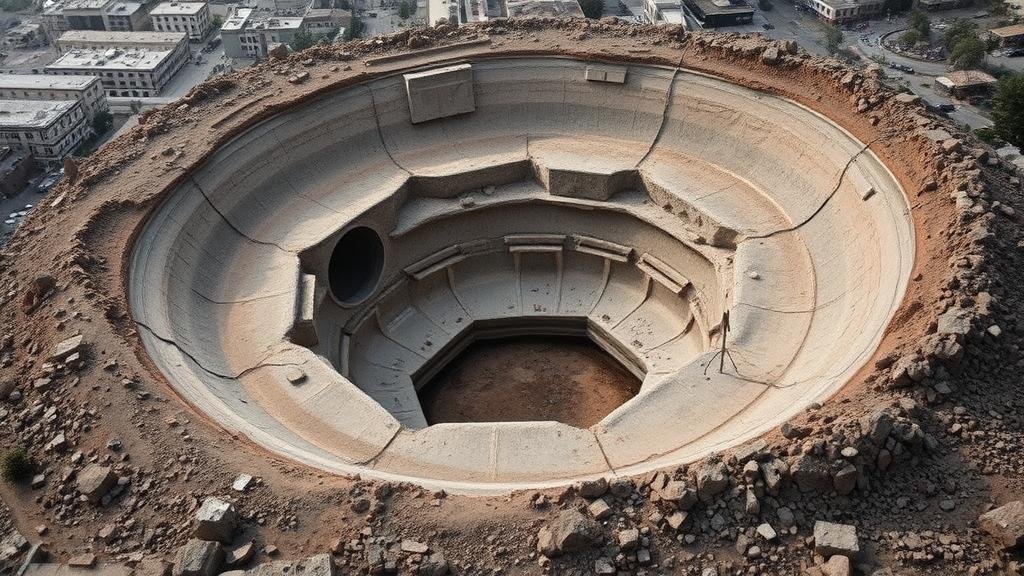Detecting in Crater Areas Created by Historical Bombing or Shelling
Detecting in Crater Areas Created by Historical Bombing or Shelling
Detecting in crater areas created by historical bombing or shelling is a complex task that involves various methodologies tailored to assess unexploded ordnance (UXO), environmental contamination, and historical site preservation. This article delves into the intricacies of detecting and analyzing these craters, emphasizing techniques, challenges, and case studies.
Understanding the Context of Historical Bombing
Historical bombing, particularly during wars, has led to the creation of craters in multiple terrains. Such locations often retain remnants of explosives and can pose significant risks to the environment and civilian safety. Understanding the historical context is crucial for conducting surveys in these areas.
- During World War II, over 1,500,000 tons of bombs were dropped on Germany alone, creating numerous craters.
- The Vietnam War led to around 7 million tons of ordnance being dropped, leaving behind considerable UXO risks.
The implications of these bombings extend beyond the immediate destruction; they also affect soil quality, water sources, and local ecosystems, necessitating systematic detection and evaluation methods.
Techniques for Detection
Several techniques have been developed for effectively detecting UXO in crater areas. These methodologies range from simple visual inspections to advanced electronic detection systems.
1. Visual Surveys
Visual surveys are the most basic form of detection and can be effective when craters are shallow and visible. Trained personnel examine the area for the signs of UXO, taking care to document and report any findings. These surveys are often the first step in a comprehensive assessment.
2. Geophysical Methods
Geophysical detection methods utilize tools that can identify anomalies in the Earth’s magnetic and electromagnetic fields, which may indicate the presence of buried ordnance. Common techniques include:
- Magnetometry: This method measures magnetic fields to detect ferromagnetic materials, such as unexploded bombs.
- Ground Penetrating Radar (GPR): GPR sends radar pulses into the ground, identifying differences in material properties that indicate potential UXO.
Case studies have demonstrated the effectiveness of geophysical methods. For example, in 2020, a combination of GPR and magnetometry was successfully applied to WWII sites in France, significantly reducing the time spent detecting ordnance compared to previous manual methods.
Challenges Faced in Detection
Detecting UXO in crater areas is not without its challenges. Factors influencing detection efficacy include:
- Terrain Variability: Craters may be influenced by environmental conditions such as soil type, vegetation cover, and water saturation, making detection difficult.
- Residual Explosive Hazards: The presence of conventional munitions, such as bombs and artillery shells, may complicate operational procedures, necessitating careful handling protocols.
Also, the presence of other metallic debris unrelated to UXO may create false positives in detection methods, leading to inefficient resource allocation and increased safety risks.
Environmental and Safety Considerations
Assessing the environmental impact of historical bombings is equally crucial. Explosives can contaminate soil and groundwater, necessitating environmental sampling and analysis. Analytical chemistry methods can quantify levels of heavy metals and explosive residues, which could pose health risks to surrounding communities.
Safety protocols must be adhered to during detection missions. Proper training in UXO identification and handling, along with risk assessments prior to site operations, can mitigate potential incidents.
Case Study: The Cleanup of Explosive Remnants of War in Vietnam
One of the most significant examples of detecting and managing damage caused by historical bombing is the ongoing efforts in Vietnam, where approximately 30% of ordnance dropped during the Vietnam War remains undiscovered. In recent years, multiple NGOs and international organizations have employed advanced detection technologies such as GPR and drone surveys to identify and safely remove UXO.
This comprehensive approach not only enhances safety but also promotes rehabilitation in these regions, turning potential hazards into areas of development. It highlights the importance of integrating detection technologies with community engagement and environmental sensitivity.
Actionable Takeaways
For individuals and organizations involved in detection efforts, the following strategies are recommended:
- Use a mixed-methods approach, combining visual surveys with geophysical tools to improve detection accuracy.
- Use continuous training programs for detection personnel on safety protocols and new technologies.
- Engage local communities in educational programs to raise awareness about the dangers of UXO and promote collaboration in detection efforts.
By integrating advanced technologies and community insights, the challenges of detecting in crater areas created by historical bombing can be effectively addressed, ensuring safer environments for current and future generations.



